The prickly pear cactus—also known as Opuntia or nopal—is a true treasure of the desert. Recognizable by its flat, paddle-shaped pads and colorful fruit, this remarkable plant is not only beautiful but also incredibly nutritious and surprisingly tasty. Yet, many people don’t realize that you can eat parts of this cactus safely — and enjoy them in a variety of delicious ways.
If you’ve ever seen the bright red or purple fruit of a prickly pear and wondered how to eat it without getting pricked, you’re in the right place. Inspired by the video “How to Eat a Prickly Pear Cactus”, this post will walk you through everything you need to know — from identifying and harvesting the fruit to cleaning, peeling, and preparing it for eating. We’ll also explore its flavor, nutritional benefits, and creative ways to enjoy this exotic treat.
1. What Is a Prickly Pear Cactus?
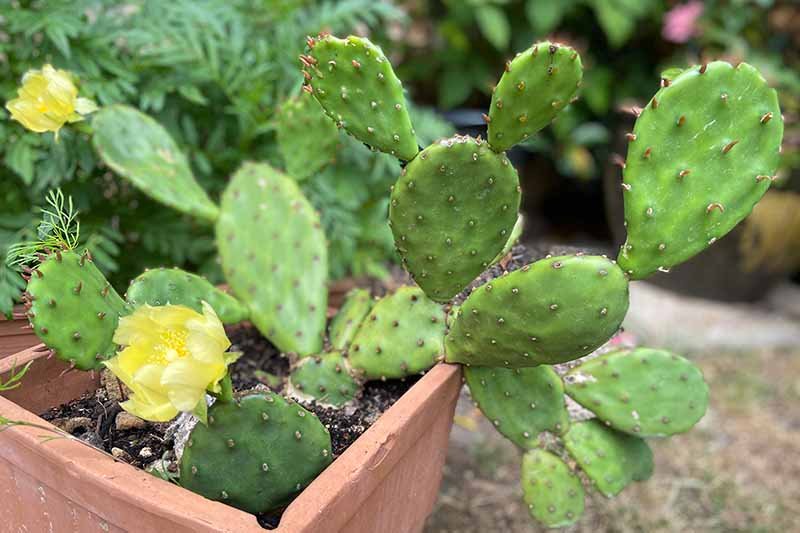
The prickly pear cactus (Opuntia spp.) is native to the Americas and thrives in arid and semi-arid regions. It’s a symbol of survival and adaptation — growing where few other plants can. The cactus is made up of two main edible parts:
- Nopales – The flat green pads of the cactus, which can be eaten as a vegetable (often grilled or cooked).
- Tunas – The colorful, pear-shaped fruits that grow from the top of the pads. These are what most people refer to as “prickly pears.”
The fruit can range in color from green, yellow, and orange to deep magenta and purple, depending on the variety and ripeness. Its flavor is often described as a mix between watermelon and pear with a hint of citrus — refreshing, mildly sweet, and slightly tangy.
2. Harvesting the Fruit Safely
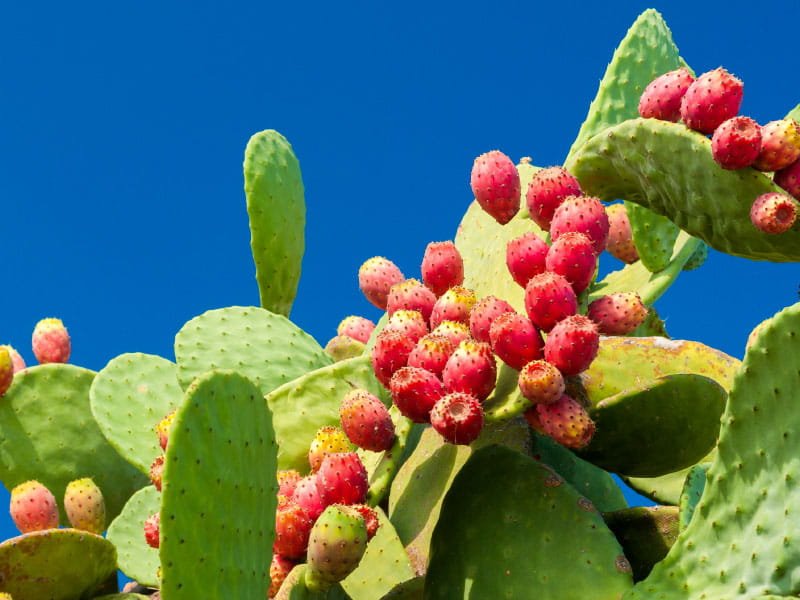
Before you can enjoy a prickly pear, you must harvest it carefully — because, as the name suggests, it’s covered in tiny, nearly invisible spines called glochids. These spines can easily stick to your skin and cause irritation, so safety is key.
Here’s how to harvest prickly pears correctly:
- Wear thick gloves or use long tongs to handle the fruit. Never touch them directly with your bare hands.
- Choose ripe fruit – Look for fruits that are deep in color and slightly soft to the touch. Unripe fruits are hard and less flavorful.
- Twist or cut the fruit off at its base. A gentle twist often removes it easily if it’s ripe.
- Collect them in a bucket or basket, making sure to avoid shaking or brushing them roughly, as that can release more glochids.
Once harvested, the real trick begins — removing the spines so you can safely enjoy the sweet interior.
3. How to Remove the Spines
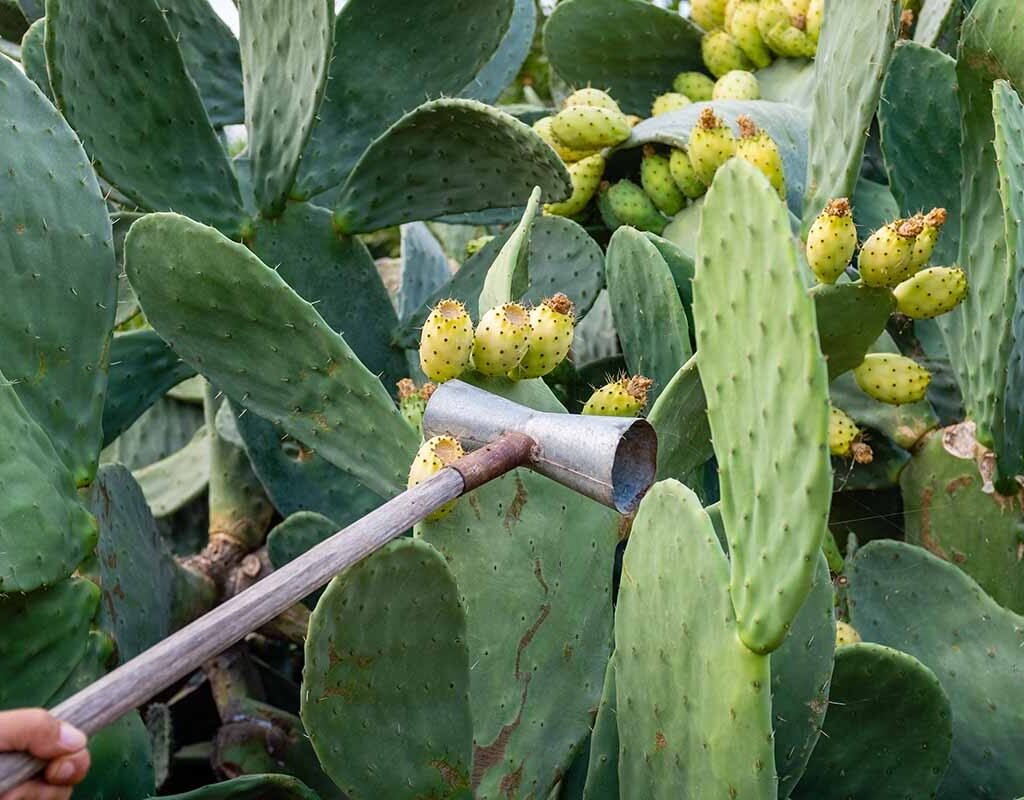
There are a few proven methods to remove the glochids safely before eating:
Option 1: Burn Them Off
This is the traditional method used in many desert regions.
- Hold the fruit with tongs and carefully pass it over an open flame, such as a gas burner or candle flame.
- Rotate the fruit until you hear faint popping sounds — that’s the glochids burning off.
- Once finished, rinse the fruit under cool water and pat it dry.
Option 2: Scrub and Rinse
If you don’t have an open flame:
- Place the fruits in a sink or bowl of cold water.
- Use a vegetable brush or clean cloth to gently scrub off the glochids.
- Rinse thoroughly several times to ensure all spines are removed.
Option 3: Freeze and Rinse
Some people prefer to freeze the fruits overnight and then rinse them under warm water the next day. The glochids often break off more easily this way.
No matter which method you choose, always inspect carefully before handling or eating, as even one tiny spine can be unpleasant!
4. How to Peel a Prickly Pear
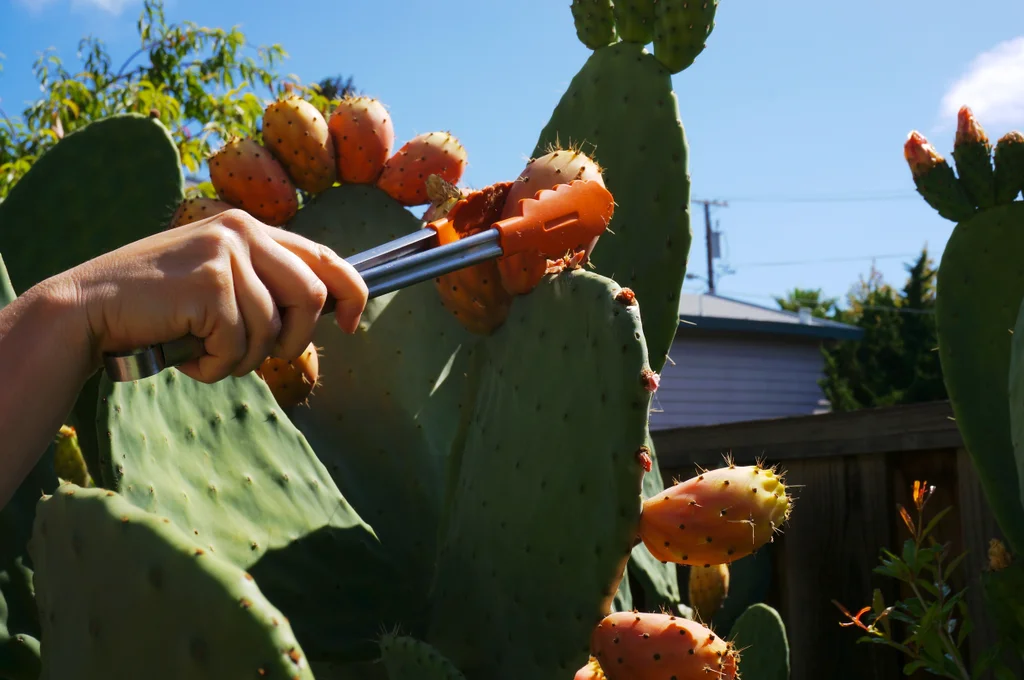
Once the spines are gone, peeling is easy. Here’s a simple step-by-step method:
- Place the fruit on a cutting board and cut off both ends (top and bottom).
- Make a shallow vertical slit down one side of the fruit’s skin — just enough to penetrate the outer layer.
- Use your fingers or a knife to peel the thick skin away. It should come off easily, revealing the soft, juicy pulp inside.
You’ll notice the interior has tiny edible seeds embedded in the flesh. These seeds are safe to eat, though some people prefer to spit them out or strain them if using the fruit for juice or desserts.
5. Eating the Fruit Fresh
Once peeled, the prickly pear fruit can be enjoyed in many simple ways:
- Eat it raw: Slice it and enjoy the pulp fresh, just like melon or kiwi.
- Chill it first: Refrigerating it for an hour enhances its refreshing flavor.
- Add lime juice: A squeeze of lime complements its natural sweetness perfectly.
- Pair with other fruits: Mix prickly pear chunks with watermelon, mango, or pineapple for a tropical fruit salad.
Each bite offers a mild, sweet taste with a subtly floral aroma — a flavor unlike any other fruit.
6. Making Prickly Pear Juice
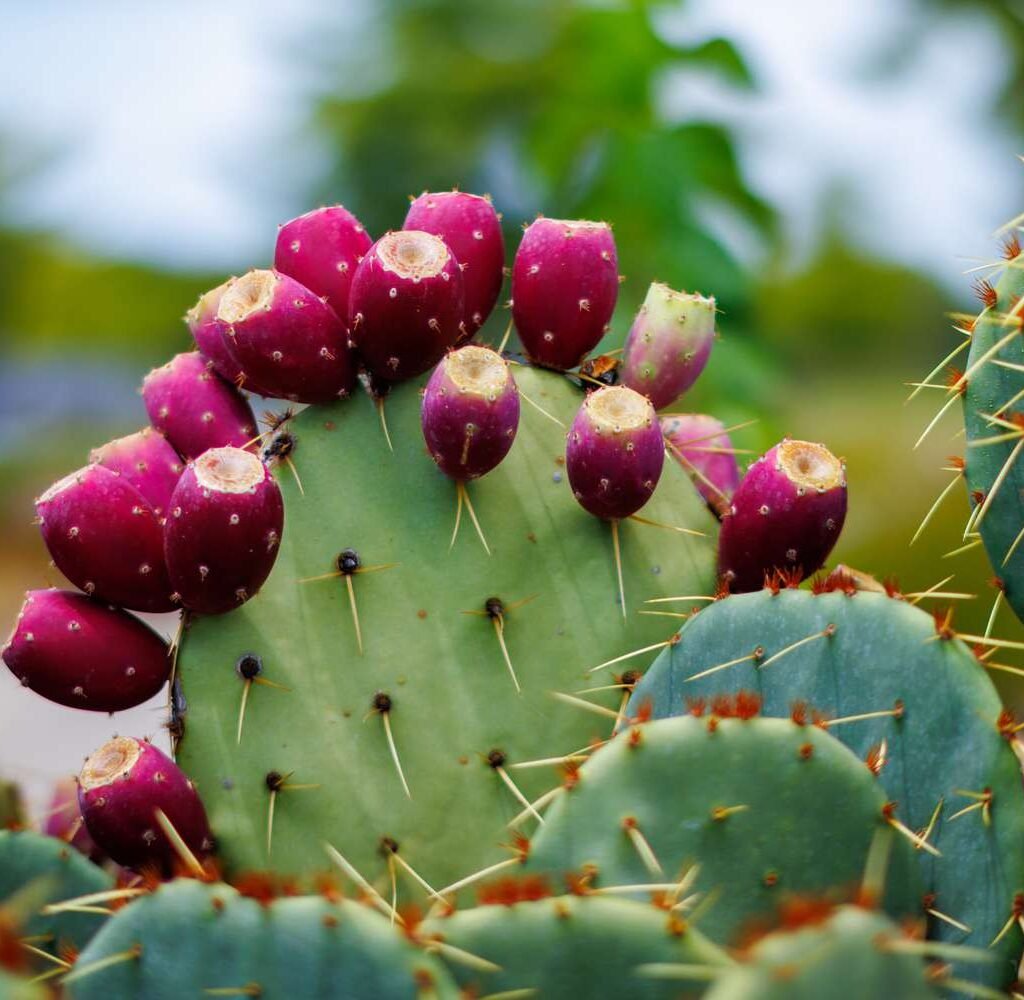
One of the most popular ways to enjoy prickly pear is by turning it into juice or syrup. Here’s how:
- Peel and chop several ripe prickly pears.
- Place them in a blender and blend until smooth.
- Pour the mixture through a fine mesh strainer or cheesecloth to remove seeds and pulp.
- Chill and serve over ice — or mix with lemonade or sparkling water for a refreshing desert drink.
If you want a sweeter version, add a touch of honey or agave syrup. The resulting juice has a stunning magenta color and a taste similar to watermelon mixed with bubblegum — truly unique and delicious.
7. Cooking with Prickly Pear
Beyond fresh eating, prickly pear fruit can be used in a variety of recipes:
- Prickly Pear Jelly or Jam: Combine juice with sugar and pectin to make a bright, flavorful spread.
- Prickly Pear Sorbet: Blend prickly pear puree with lime juice and freeze for a refreshing dessert.
- Prickly Pear Margarita: Mix the juice with tequila, lime, and a salted rim for a stunning cocktail.
- Sauces and Glazes: Reduce the juice to make a sweet glaze for grilled meats or seafood.
The fruit’s natural color makes it perfect for visually striking dishes — ideal for impressing guests or adding a pop of color to your meals.
8. Don’t Forget the Pads (Nopales)
While the focus is often on the fruit, don’t overlook the cactus pads themselves! Known as nopales, they’re a staple in Mexican cuisine.
To prepare nopales:
- Choose young, tender pads.
- Remove spines and edges with a knife or vegetable peeler.
- Slice into strips and boil for 10–15 minutes to remove sliminess.
- Then grill, sauté, or mix into salads, tacos, and scrambled eggs.
Nopales have a slightly tart, green-bean-like flavor and are rich in fiber, vitamins, and antioxidants. Together, the fruit and pads make the prickly pear cactus one of the most versatile edible plants in the desert landscape.
9. Nutritional Benefits of Prickly Pear Cactus
Both the fruit and pads are nutritional powerhouses. A single serving of prickly pear fruit provides:
- Vitamin C: Supports immunity and healthy skin.
- Magnesium and Potassium: Helps regulate hydration and blood pressure.
- Antioxidants: Rich in betalains and flavonoids that fight inflammation.
- Fiber: Aids digestion and helps regulate blood sugar.
Studies even suggest that prickly pear may help lower cholesterol and control blood sugar, making it a favorite in natural health communities.
It’s a great example of how traditional indigenous foods are not only sustainable but also profoundly nourishing.
10. Storing and Preserving Prickly Pears
Fresh prickly pears can last up to a week in the refrigerator. For longer storage:
- Freeze the peeled fruit: Place in a freezer-safe container for up to 6 months.
- Make syrup or jam: These can last for months and preserve both the flavor and color.
- Dehydrate slices: Dried prickly pear has a chewy, candy-like texture that makes for a healthy snack.
Whether you enjoy them fresh or preserved, their vibrant color and taste are a reminder of the desert’s bounty.
11. A Taste of the Desert: Why You Should Try It
Eating a prickly pear is more than just enjoying a fruit — it’s an experience that connects you to centuries of desert culture and survival. Indigenous peoples of the Americas have long used the prickly pear for food, medicine, and even as a source of natural dyes.
When you take that first bite of the sweet, jewel-toned flesh, you’re tasting a piece of history — one that has nourished people and wildlife across the deserts of Mexico, the southwestern United States, and beyond.
Final Thoughts
The prickly pear cactus is a marvel of nature: resilient, nourishing, and surprisingly delicious. Learning how to eat it safely transforms something seemingly dangerous into a delightful and healthy treat.
From harvesting to peeling, juicing, and cooking, every step is a reminder that beauty often hides behind challenges — just like this cactus hides its sweetness behind sharp spines.
So the next time you come across a prickly pear, don’t shy away. With a little care and know-how, you can unlock its vibrant flavors and enjoy a true taste of the desert.
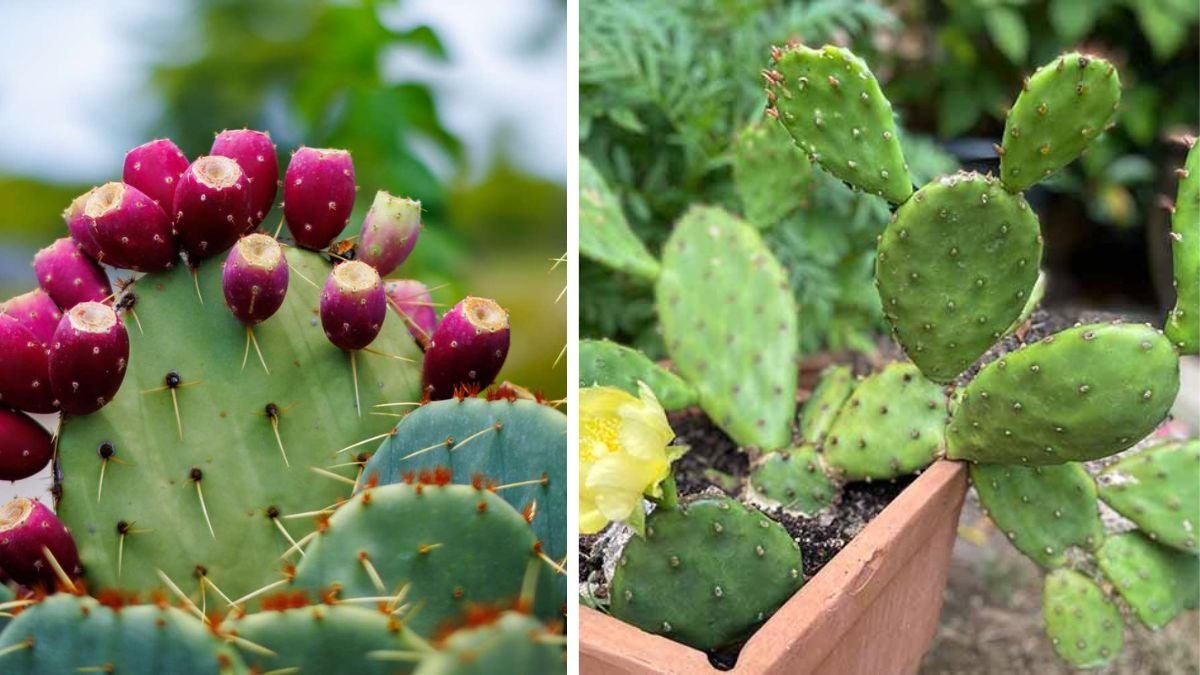



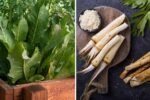

Leave A Comment